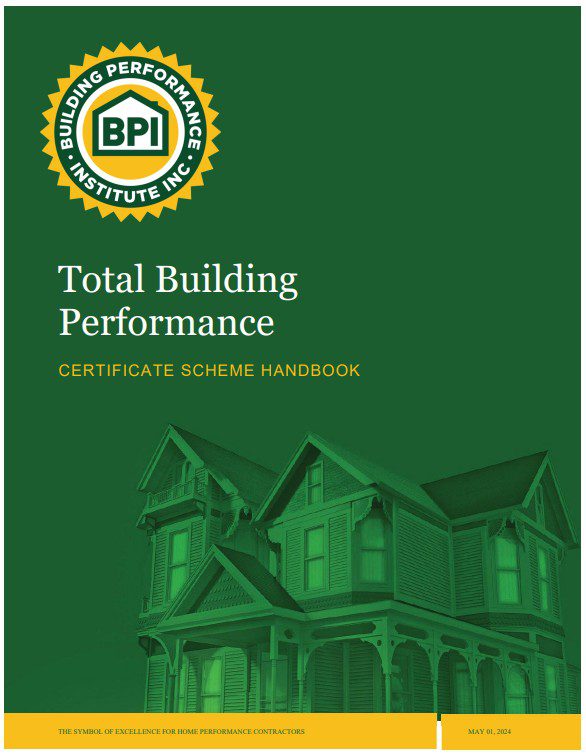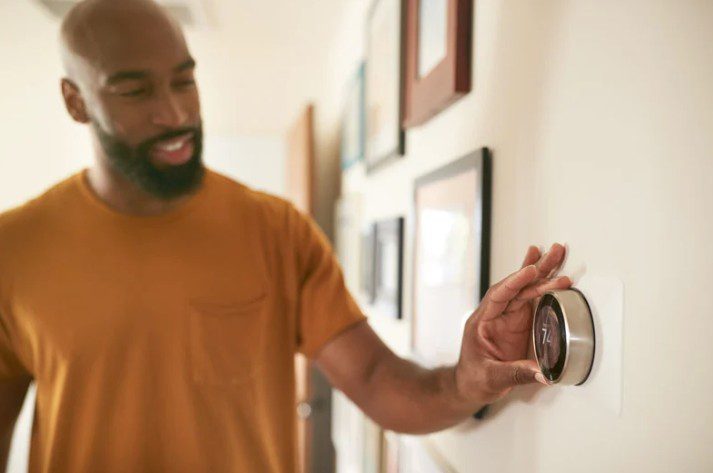Apr 14, 2025
Total Building Performance: The Certificate That Brings Clarity to Complex Home Retrofits
BPI's Total Building Performance (TBP) Certificate equips you with the knowledge to lead deep energy retrofits, bridging the gap between complex home systems and homeowner goals.
By: Macie Melendez
We all know that home performance can be complicated for homeowners. While the “house is a system” concept is simple in theory, energy efficiency projects tend to get more complex in practice. This is especially true for deep energy retrofits.
Deep energy retrofits achieve household energy reductions of at least 50% by addressing all major energy loads: space conditioning, hot water, lighting, solar energy, appliances, and plug loads. They may also address other on-site power generation, electrical or thermal storage, and prepare the electrical system to support electric vehicles.
Needless to say, for a deep energy retrofit to produce the desired results, several companies and contractors must communicate and coordinate effectively. This is what makes it challenging for homeowners—managing several people and coordinating processes can be daunting and overwhelming.
But—true to form—when there’s a problem, this industry will find a solution.

The Building Performance Institute (BPI), in partnership with Northeast Energy Efficiency Partners (NEEP), Energy Futures Group, and BPA, has created the Total Building Performance (TBP) Certificate of Knowledge. This certificate is for anyone who is part of the energy efficiency and renewable energy workforce who wants to prove their ability to serve as a project manager for residential building decarbonization projects.
With this certificate, a person can coordinate the deep energy retrofit process and help the customer find rebates, incentives, and financing to meet their needs and budget.
“The TBP is not a specific skillset like many other certifications,” said Brent Divine, a Building Performance Specialist at Owensboro Insulators, LLC—an insulation company based in Kentucky. “TBP is all encompassing of what an energy efficiency or decarbonization project consists of. You learn about communicating with your client, setting expectations, and even budgeting for the project. It dives into industries outside of what your company may do to help you understand how it works together for total building performance.” Divine came into the TBP certificate exam with extensive knowledge of HVAC and building envelope principles, but he said he learned a lot about the solar industry and carbon emissions.
Another TBP certificate holder, Marcy Cleveland, said, “The TBP raises awareness of what we need in the industry now that we’re pushing home electrification. It emphasizes the need for someone to oversee the total process.” Cleveland is the Owner and Operator of Green Building Specialists, a New York-based home performance company that uses the whole-house approach.
Jeff Luoma, an Energy Assessor and Consultant for Cleveland’s company, also holds the TBP certificate and agreed that it fulfills a need for contractors. “It’s meant for the whole building,” said Luoma. “It’s more than the details of how to do a job, more than the building envelope—it’s broader than that. It challenged me to see if I knew what I knew or not.”

The TBP certificate does have some prerequisites, which are used to determine if it’s the right fit for you. Divine said the certificate process had several important steps. “The first step was meeting prerequisites: one year of relevant experience and possessing at least one certification from BPI or a list of other accredited certifications. The second step was reviewing the TBP handbook, which I highly suggest. The third was going through the study modules.”
One thing that Luoma liked about the certificate process is that it allowed for flexibility. He was able to complete the practice tests on some sections and confirm he knew enough about that area to briefly skim the content as opposed to other sections where he needed to read in-depth. “That part was essential to my time management,” he said.
Cleveland, on the other hand, took the course in increments. “It was nice that you could learn at your own pace,” she said.
According to BPI, the TBP certificate includes eight areas of knowledge. An individual who has successfully completed the exam can:
- Demonstrate proficiency in designing a building decarbonization project,
- Understand project financial analysis for a building decarbonization project,
- Demonstrate proficiency in communication to clients,
- Understand energy modeling, load calculations and measure analysis of a building decarbonization project,
- Understand building science and whole-building concepts,
- Understand project carbon impacts,
- Identify electrification/decarbonization technologies, and
- Understand the post-retrofit process.
The TBP certificate is a great way for home performance contractors to use their knowledge gained to develop new lines of business.

“The TBP certification has helped me out immensely with adding extra value to the services my company offers,” said Divine. “While I may not be an expert in financing, rebates, or the solar industry, [the certificate] has given me a framework of what a total building performance project encompasses so that I may guide my customers to experts who may help compliment my services in reaching their final goal.”
Luoma agreed and said, “It helped remind me of the breadth of what we’re outlining for the homeowner.”
John Horchner, a professional writer who runs his website, Green Home Club, in Minnesota, also took the TBP certificate exam and agrees it’s exactly what our industry needs right now. Horchner first became a BPI-certified as a Building Analyst in 2011. At that time, he was publishing a utility-sponsored blog for Pennsylvanians.
“Fast forward to 2023,” he said. “I found myself going through the process all over again. This time, I decided to do more than write about it; I would do it myself.” Horchner had spent years dealing with an uncomfortable, cold kitchen in his home in Pittsburgh before moving to St. Paul where he discovered thousands of tiny cracks in the rim joists of his 1916 home, causing yet another cold kitchen. “This experience taught me that deep home retrofits aren’t just nice-to-haves; they’re essential,” he said.
When he took the TBP course modules, he knew they were aimed at people who seek to manage and/or sell entire projects—but he quickly realized that there are not enough of those types of people who are able to understand and coordinate many different trades used in the process of overseeing a deep energy retrofit. “The course framed the home as a system, where heat, air, and moisture interact in ways that most homeowners—and even most contractors—don’t fully understand, and covered everything from selling to developing a scope of work. I wanted to bring that same knowledge to homeowners,” he said.
While each piece of the home performance puzzle has its merits, there’s clear value to understanding how all of them fit together. This knowledge can help you expand your services or just be more informed in conversations with your customers.
In Horchner’s words, “By taking a building science-first approach, we can help homeowners see they aren’t just buying a product but they’re choosing the best way to live.” The TBP can help you—and your business—do just that.






